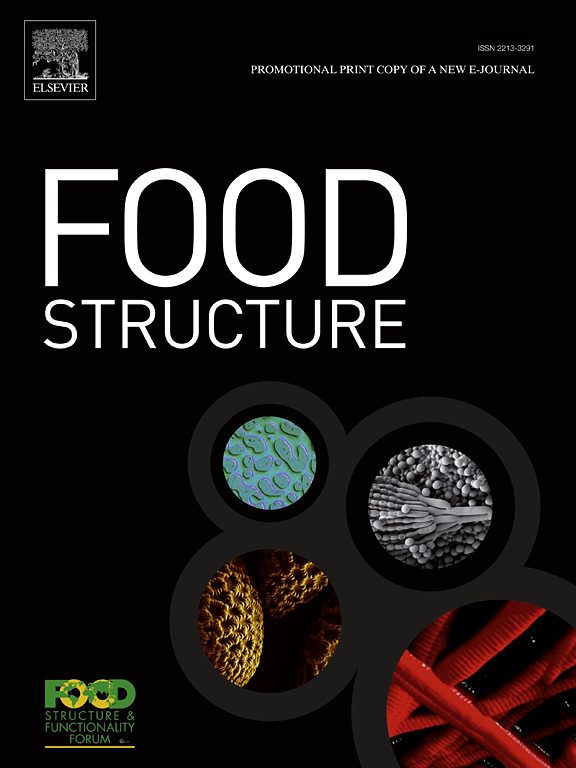Regulating texture quality in intermediate moisture foods: A comparative study on the impact of various sugar substitutes during storage
IF 5.6
3区 农林科学
Q1 FOOD SCIENCE & TECHNOLOGY
引用次数: 0
Abstract
This study systematically explored the effects of five sugar substitutes—sorbitol, xylitol, maltitol, psicose, and tagatose—on the texture stability of dried milk bars, an intermediate-moisture food, during storage at 25 °C for four months. Compared to sucrose, all sugar substitutes enhanced texture stability by mitigating hardening. Xylitol and sorbitol exhibited superior plasticizing properties, likely minimizing moisture migration and phase separation, contributing to a softer texture and significantly reduced hardening throughout storage. Notably, xylitol while modulating starch-lipid interactions. Maltitol shows the most similar texture changes to sucrose; however, its strong intramolecular hydrogen bond strength effectively inhibits starch retrogradation, keeping the overall hardness during storage consistently lower than those of sucrose. Tagatose and psicose undergo Maillard reactions, leading to a harder texture, especially in the later stages of storage. Nevertheless, compared to sucrose, the anti-crystallization properties of tagatose and psicose result in smaller changes in food structure during storage. These findings provide new insights into the mechanisms through which sugar substitutes influence texture stability in intermediate-moisture foods and highlight their potential for improving product quality during storage.
调节中等水分食品的质构:不同糖替代品在贮藏过程中影响的比较研究
本研究系统地探讨了五种糖替代品山梨醇、木糖醇、麦芽糖醇、甘露糖和塔格糖对干牛奶棒(一种中等水分食品)在25℃条件下储存4个月的质地稳定性的影响。与蔗糖相比,所有糖替代品都通过减轻硬化来增强质地稳定性。木糖醇和山梨醇表现出优异的塑化性能,可能最大限度地减少水分迁移和相分离,有助于质地更柔软,并在储存过程中显著减少硬化。值得注意的是,木糖醇同时调节淀粉-脂质相互作用。麦芽糖醇表现出与蔗糖最相似的结构变化;但其较强的分子内氢键强度能有效抑制淀粉的降解,使其在贮藏过程中的整体硬度始终低于蔗糖。塔格糖和甘薯会发生美拉德反应,导致口感更硬,尤其是在储存的后期。然而,与蔗糖相比,塔格糖和甘蔗渣的抗结晶特性导致贮藏过程中食物结构的变化较小。这些发现为糖替代品影响中等水分食品质地稳定性的机制提供了新的见解,并突出了它们在提高储存期间产品质量方面的潜力。
本文章由计算机程序翻译,如有差异,请以英文原文为准。
求助全文
约1分钟内获得全文
求助全文
来源期刊

Food Structure-Netherlands
Chemical Engineering-Bioengineering
CiteScore
7.20
自引率
0.00%
发文量
48
期刊介绍:
Food Structure is the premier international forum devoted to the publication of high-quality original research on food structure. The focus of this journal is on food structure in the context of its relationship with molecular composition, processing and macroscopic properties (e.g., shelf stability, sensory properties, etc.). Manuscripts that only report qualitative findings and micrographs and that lack sound hypothesis-driven, quantitative structure-function research are not accepted. Significance of the research findings for the food science community and/or industry must also be highlighted.
 求助内容:
求助内容: 应助结果提醒方式:
应助结果提醒方式:


